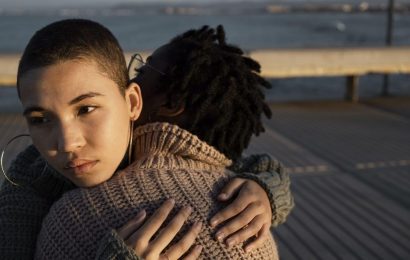"A question I get all the time, 'if I am fat or a very fat person, what will happen to my body when I die?"
This is how Caitlin Doughty, a mortician and YouTuber with 1.56 million subscribers began, one her latest videos. The US-based mortician raised the question on her "Ask A Mortician" channel, which seeks to answer questions related to mortality.
The video gained more than 2.6 million views and discusses funeral options for those who are overweight.
In this video, she allayed fears by saying that every body type can be accommodated for overweight can be both cremated or buried if they choose to.
However, the downside is that the ritual might be more expensive, as the standard casket is the US is 24 – 27 inches wide. So overweight people may need to custom order their casket to suit their needs.
So that begs the question – what happens in the UK?
A few years back, The Independent reported that obese Scottish people were having to be buried rather than cremated as their bodies were too large for a standard furnace.
At the time, The National Association of Funeral Directors (NAFD) spoke of an increasing number of Scots requiring larger caskets that can be up to a metre wide, too large for many crematoriums.
However it seems that times are changing. Looking into cremation options for larger people, we found that a third of all crematoriums in the UK can accommodate a coffin that's 40 inches wide – the majority of these being built in the 1990s onwards.
The largest furnace being in East Devon which can fit a coffin up to 45 inches wide.
The NAFD said: “Larger deceased people can be both cremated and buried."
-
Elderly man praised for sharing 'beautiful' wisdom on coping with loss and grief
“Experience from our members suggests that average coffin widths have gone up in the past ten years, from around 20-22 inches to 22-24 inches, although cremators are now being installed in the UK that can handle coffins up to 41 inches wide.
“Similarly, some burial authorities now offer larger grave sizes to accommodate these larger coffins."
That said, it is not unheard of for families to have to fork out for two plots in a graveyard if their loved one's coffin is too large for a standard single plot.
According to NAFDA, many funeral homes have significantly invested in specialist equipment that allows them to care for those that are larger whilst executing funerals to a high standard.
These include automatic 'rise and fall' decks that can be installed in funeral vehicles; bigger mortuary refrigerators; bariatric hoists and trolleys; and training for staff covering areas like correct lifting techniques.
The NAFDA added: "The primary objective is to ensure that all clients – and their families – are cared for with respect and treated with dignity, irrespective of their physical characteristics.
"In our members' experience, almost without exception, the families involved are realistic about the differing needs of their deceased loved one and what this might mean in terms of their funeral. The choices they go on to make, though, generally depend on local facilities.
"Funeral directors are experienced in handling the differing requirements for the funeral of an obese person in tactful and considerate ways.
"For example, a tradition in Scotland under normal circumstances (not currently permitted under Covid restrictions) is for members of the family to lower the coffin into the ground using cords and tassels on the handles of the coffin.
"However with a larger coffin this may not be possible, or advisable, and so our members talk gently through the alternatives. Most of the families choose the coffin to be lowered into the ground prior to the family’s arrival, either using a hoist system or by a larger team from the funeral firm.
"A graveside service can then still be held, preserving the dignity of the deceased and sparing the family from distress."
For funeral notices in your area visit funeral-notices.co.uk
Source: Read Full Article












